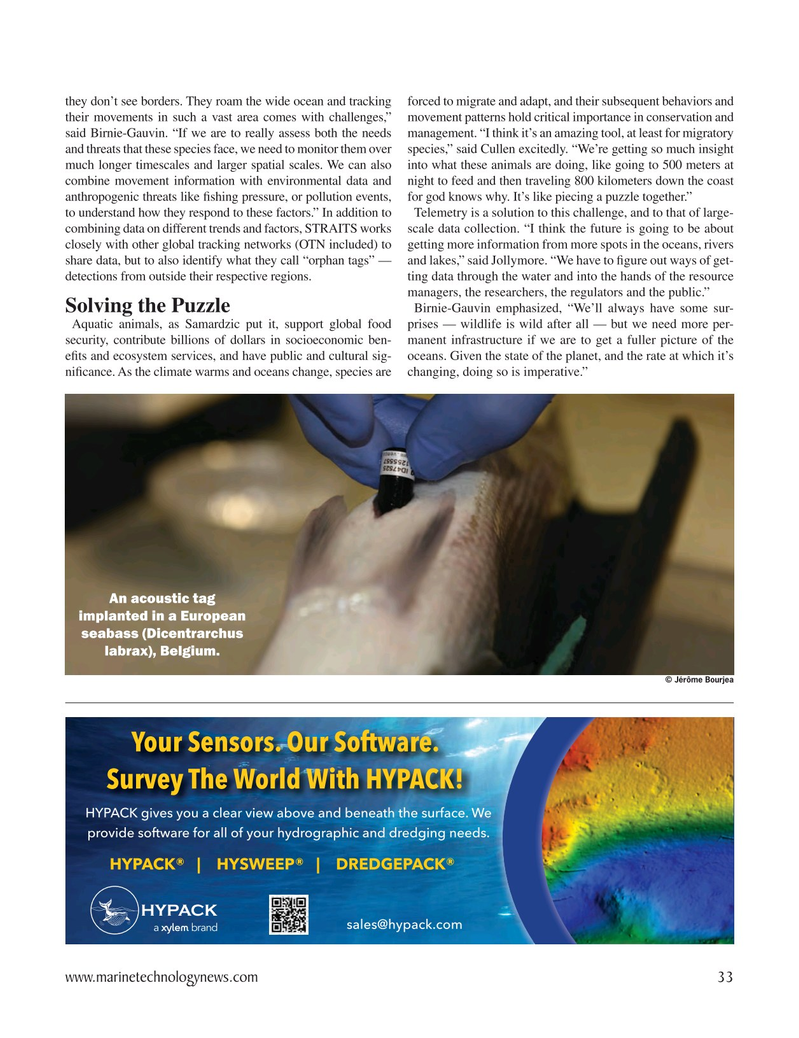
Page 33: of Marine Technology Magazine (May 2023)
Read this page in Pdf, Flash or Html5 edition of May 2023 Marine Technology Magazine
they don’t see borders. They roam the wide ocean and tracking forced to migrate and adapt, and their subsequent behaviors and their movements in such a vast area comes with challenges,” movement patterns hold critical importance in conservation and said Birnie-Gauvin. “If we are to really assess both the needs management. “I think it’s an amazing tool, at least for migratory and threats that these species face, we need to monitor them over species,” said Cullen excitedly. “We’re getting so much insight much longer timescales and larger spatial scales. We can also into what these animals are doing, like going to 500 meters at combine movement information with environmental data and night to feed and then traveling 800 kilometers down the coast anthropogenic threats like ? shing pressure, or pollution events, for god knows why. It’s like piecing a puzzle together.” to understand how they respond to these factors.” In addition to Telemetry is a solution to this challenge, and to that of large- combining data on different trends and factors, STRAITS works scale data collection. “I think the future is going to be about closely with other global tracking networks (OTN included) to getting more information from more spots in the oceans, rivers share data, but to also identify what they call “orphan tags” — and lakes,” said Jollymore. “We have to ? gure out ways of get- detections from outside their respective regions. ting data through the water and into the hands of the resource managers, the researchers, the regulators and the public.”
Solving the Puzzle Birnie-Gauvin emphasized, “We’ll always have some sur-
Aquatic animals, as Samardzic put it, support global food prises — wildlife is wild after all — but we need more per- security, contribute billions of dollars in socioeconomic ben- manent infrastructure if we are to get a fuller picture of the e? ts and ecosystem services, and have public and cultural sig- oceans. Given the state of the planet, and the rate at which it’s ni? cance. As the climate warms and oceans change, species are changing, doing so is imperative.”
An acoustic tag implanted in a European seabass (Dicentrarchus labrax), Belgium. © Jérôme Bourjea
Your Sensors. Our Software.
Survey The World With HYPACK!
HYPACK gives you a clear view above and beneath the surface. We provide software for all of your hydrographic and dredging needs.
HYPACK® | HYSWEEP® | DREDGEPACK® [email protected] www.marinetechnologynews.com 33
MTR #4 (18-33).indd 33 5/31/2023 4:07:10 PM

 32
32

 34
34
